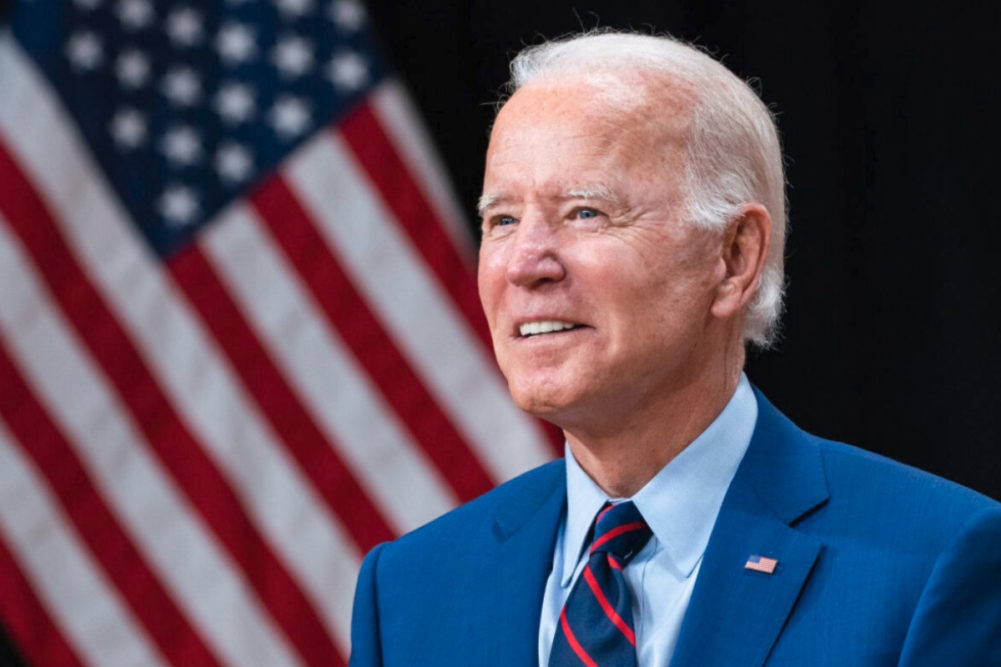WASHINGTON — Two-thirds of the way through President Joe Biden’s first 100 days, the principal challenges he confronts are becoming clearer. In his Inaugural Address he defined them as: crushing the COVID pandemic; rebuilding the economy; and confronting climate change. While these may be the major policy issues he confronts, they really are a subtext to some broader problems: governing domestically; aligning with allies; and confronting America’s adversaries.
The 2020 election put both Congress and the White House in the hands of Democrats.
Progressives within that party see this as an opportunity to move an extensive liberal agenda. A number of President Biden’s early executive orders and his $1.9 trillion COVID relief bill seem to further that agenda.
Other factors, however, may push the federal government in a different direction over time.
The Jan. 6 invasion of the US Capitol by what the FBI labeled as “domestic terrorists” highlighted the dangers of leaning to extremes, right or left. Even though the COVID relief bill passed Congress on party line votes, Democrat Senator Joe Manchin of West Virginia forced several moderating amendments, voiced his opposition to ending the filibuster and signaled his desire for more bipartisanship.
The potential influence of the “Problem Solvers” caucus — now 28 members from each party — strengthens the voices for moderation in the House, as will the apparent economic recovery already underway. Progressive Democrat proposals likely will continue to be introduced, but President Biden seems to understand that any legislation that cannot be passed under “reconciliation” rules will have to be bipartisan.
The major test for bipartisanship will be policies to strengthen the economy, including investing in infrastructure, social justice measures and a national competitiveness strategy. How much spending will be earmarked for these goals, and how that spending will be structured, most likely will have to be shaped by centrist Republicans and Democrats to pass the Senate.
Reinforcing this inclination is a major lesson from the pandemic: the wooly mix of governmental policies on lockdowns, reopenings, mask mandates and social distancing did less to curb the COVID pandemic than rapid development and deployment of vaccines under a public-private collaboration.
Aligning with allies
President Biden, both verbally and symbolically, has sent the message that he sees America stronger working with allies than going it alone. He has rejoined the World Health Organization and the Paris Climate agreement and signaled openness to rejoining the nuclear deal with Iran.
A bump in this road, however, is that European allies in particular have become more skeptical of American reliability. Asian alliances may be easier to rekindle because many Asian countries feel the growing pressures of a rising China, but they also can be expected to resist a foreign policy that asks them to choose between the United States and China.
Consequently, restoring strong relations with major allies and foreign powers may prove murkier and more hesitant than President Biden may have hoped. Returning to the status quo pre-2016 is no longer possible, but what cooperation is possible going forward remains to be seen. One thing seems certain: it will have to be pragmatic and involve compromise.
Confronting America’s adversaries
The main adversaries requiring the Biden administration’s immediate attention are China, Russia, Iran and North Korea. Though the last two have the most risk of armed conflict, there is little the United States can do about that risk unilaterally, and President Biden’s signal of an openness to dialogue may be all that can be done for now.
Russia poses a different kind of challenge. America has long faced tensions with Russia over election interference, cyber attacks, Ukraine and human rights, the latter embodied most recently in Alexei Navalny’s imprisonment. Sanctions have been the weapon of choice in recent US administrations, to little effect. No real alternative, however, seems available unless there can be progress on the overarching issue of nuclear disarmament and non-proliferation. Little seems likely to change as long as Russian President Vladimir Putin remains in control.
China poses a threat of a very different sort. It is rising as an economic power; its military budgets are growing significantly; its Belt and Road Initiative has extended its influence into Southeast Asia, the Middle East, Africa and Latin America; and its “Made in China 2025” campaign threatens to make China the dominant player on a host of next-generation technologies.
Foreign policy experts portray the needed US-China policy as a three-legged stool. One leg is confrontation, with Taiwan, human rights and South China Sea incursions all being flash points. It is worth noting in this connection that, so far, President Biden has not lifted any of former President Donald Trump’s tariffs on Chinese goods, even though they are more likely symbolic than providing any real leverage.
Another leg is cooperation in areas of mutual interest, with climate change being a potential area of shared work. President Biden has characterized this cooperative initiative as extending as far as it serves American interests, a fairly standard expression of US foreign policy.
The third leg is competition, and it is here where major progress is needed. To be competitive will require more investment by the US government in basic research on technologies of the future without falling into the trap of an “industrial policy” that tries to pick winners and losers. To be competitive also will require closer collaboration with US allies in research as well as in devising standards, policies and practices to shape markets. And to be competitive also will require a more open trade policy and a reinvigorated economic development policy to win over or keep friends in the Pacific Basin and elsewhere. Working with the rest of the Quad — Japan, India and South Korea — will be pivotal across all of these issues.
The outlines of such a policy remain unclear. The domestic political consensus for such a policy remains elusive. The urgency of developing both, however, is undeniable.






